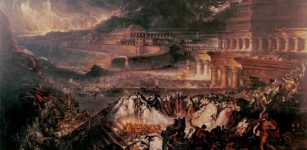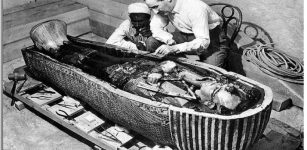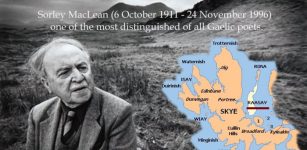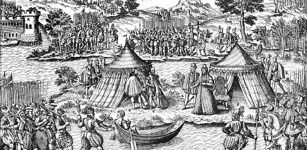On This Day In History: Tunguska Explosion: Mysterious And Ferocious Impact In Remote Siberia – On June 30, 1908
AncientPages.com - On June 30, 1908, at 7.17 am, the legendary and mysterious Tunguska explosion occurred in the area of the Podkamennaya Tunguska River, located in Central Siberia approximately 620 miles north of the town of Irkutsk and Lake Baikal.
Many scientists from Russia and abroad have proposed many plausible explanations for the phenomenon, yet none of them have proven to be 100% true.
The explosion was first reported in an Irkutsk newspaper dated July 2, 1908. The article states,
“…the peasants saw a body shining very brightly (too bright for the naked eye) with a bluish-white light… The body was in the form of ‘a pipe’, i.e. cylindrical. The sky was cloudless, except that low down on the horizon, in the direction in which this glowing body was observed, a small dark cloud was noticed. It was hot and dry and when the shining body approached the ground (which was covered with forest at this point) it seemed to be pulverized, and in its place a loud crash, not like thunder, but as if from the fall of large stones or from gunfire was heard.
All the buildings shook and at the same time a forked tongue of flames broke through the cloud.”
“All the inhabitants of the village ran out into the street in panic. The old woman wept, everyone thought that the end of the world was approaching.”
The Tunguska projectile yielded 12.5 megatons, a magnitude tripling that of the Hiroshima A-bomb and about one fifth of the energy released by the largest hydrogen bomb explosion. The altitude of the explosion was an estimated 4.7 miles, with the seismic activity of 5.0 measured on the Richter scale. Meteorological stations recorded the air compression wave circling the Earth twice.
The temperature in the center of the fireball was an estimated 30 million degrees Fahrenheit. Some sheds in the adjacent areas were devastated by fire, while all the silverware and tin appliances were melted and misshaped by the heat wave.
The inhabitants of Central Siberia in the 300-600 mile radius were able to see the descent of the meteorite and the explosion. Eighty million trees in the taiga were uprooted, while severe forest fires broke out, demolishing wildlife in the six-to-nine mile radius. The trunks and brunches of the trees however, were not burnt, just singed on the outside, seemingly by the heat wave.
After the fall of the meteorite, abnormally bright nighttimes had been reported throughout Russia’s European and Western part, as people were able to easily read at midnight without any additional lighting provided.
The origin of the Tunguska explosion is very bizarre and controversial, but several major theories tend to score more points, the first one being the comet hypothesis. It suggests that essentially, the explosion was due to a small comet. Similarity between the Hiroshima A-bomb devastation and the mysterious Tunguska anomaly propelled the idea that the 1908 event was a result of a nuclear bomb blast.
"If you want to start a conversation with anyone in the asteroid business all you have to say is Tunguska," says Don Yeomans, manager of the Near-Earth Object Office at NASA's Jet Propulsion Laboratory.
"It is the only entry of a large meteoroid we have in the modern era with first-hand accounts."
In 1921, Leonid Kulik, the chief curator for the meteorite collection of the St. Petersburg museum, led an expedition to Tunguska.
But the harsh conditions of the Siberian outback thwarted his team's attempt to reach the area of the blast. In 1927, a new expedition, again led by Kulik, reached its goal.
"At first, the locals were reluctant to tell Kulik about the event," said Yeomans.
"They believed the blast was a visitation by the god Ogdy, who had cursed the area by smashing trees and killing animals."
While testimonials may have at first been difficult to obtain, there was plenty of evidence lying around.
Eight hundred square miles of remote forest had been ripped asunder. Eighty million trees were on their sides, lying in a radial pattern. The theory of it being a black hole is another one proposed to account for the mysterious phenomenon.
The advocates of this hypothesis state that a black hole with a certain mass could have had the energy sufficient to create the Tunguska destruction. They argue that the black hole could have caused immense destruction, as it pierced through the Earth like a hot knife through butter.
At the turn of the 21st century, a new paradigm was proposed which involved Nikola Tesla's experiments. He was said to have conducted a wireless energy transmission “through the air”, which was actually the cause of the explosion. Several months before the explosion there was talk about Tesla’s intention to illuminate the way to the North Pole for the American Arctic explorer Robert Pirie.
There is also information about Tesla searching for maps depicting the most deserted parts of Siberia.
However, the most recent studies performed by American scientists in 2009 prove the comet idea to be the most viable one.
AncientPages.com























